Search myodfw.com
Showing 1 - 20 of 493 results

Recreation Report
Crabbing and Clamming Dec 4, 2025 Always check for closures at the ODA Shellfish Safety page before harvesting shellfish, which includes clams, crabs and mussels. Announcements Chinese mitten crab found in Willamette River A second confirmed Chinese mitten crab, a prohibited species in Oregon, was found and reported to ODFW on November 17 in the Willamette River near Sellwood Bridge. The first mitten crab was caught on April 22 in the Lower Columbia River. Mitten crabs caused significant infrastructure and ecological damage in and around San Francisco Bay when the population was at its height in the late 1990s and
September 21, 2017

Article
Digging razor clams is a challenging and fun recreational pastime with delicious rewards. Continue reading to learn some fundamental skills needed to harvest razor clams.
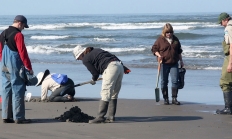
Article
Oregon crabbing is a year-round activity that can almost always yield a successful trip. Crabbing trips require minimal gear, often available for rent in coastal towns, and while boat crabbing increases your likelihood for success, dockside crabbing is easy and very accessible. Before crabbing, be aware of crab regulations. Knowledge of where, when, and how to crab will increase your chances for success. Learn where to crab
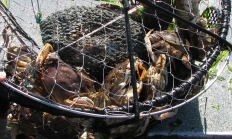
Article
The Oregon Health Authority has issued an advisory for recreationally harvested softshell and gaper clams along the Oregon coast due to arsenic contamination. Visit healthoregon.ogr/fishadv to lean more, including shellfish cleaning guidelines that reduce your exposure.
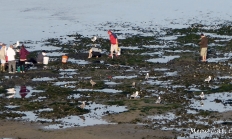
Article
Lower Yaquina Bay is “marine dominated”, meaning there is little freshwater influence, and offers many shellfishing oppurtunities.
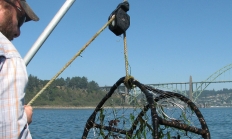
Article
Clamming is the main attraction in Netarts Bay. The bay is also one of five major crabbing bays in Oregon with good populations of both Dungeness and redrock crab.
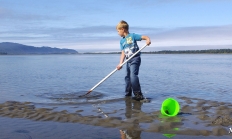
Article
Oregon estuaries are rich with many species of clams, although only a few of these species are commonly harvested. Gaper, butter, cockle, littleneck, softshell and purple varnish clams are popularly harvested due to their abundance, size and taste. A wide variety of other bivalve species are found in Oregon estuaries, but not commonly harvested due either to their scarcity or poor taste.

Article
Coos Bay is Oregon’s largest bay. The lower bay (areas from the ocean entrance to the airport) is “marine dominated”, meaning there is little freshwater influence, and offers some of Oregon’s most productive shellfishing opportunities.
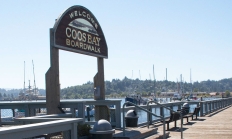
Article
Siletz Bay, located at the south end of Lincoln City, is a very popular destination for beach-goers and clam diggers. Some of the highest density purple varnish clam beds are easily accessed here. Its proximity to the ocean also makes it a very productive seasonal crabbing area

Article
Just a few miles south of Newport, the town of Waldport is on the shores of Alsea Bay. It is one of Oregon’s estuaries that does not have jetties at the ocean entrance. Strong outgoing tides and ocean swell can make boating near the mouth of the bay more dangerous. Use caution and be prepared if you crab in this area.

Article
Crabbing can be good year-round but the best catches are in the winter. Tidal flats throughout the bay produce lots of gapers, cockles and softshell clams.

Article
The Siuslaw River runs past the city of Florence and then flows for 4 miles before reaching the Pacific ocean. Areas west of the 101 bridge feature excellent seasonal crabbing and even some good diving.

Article
You'll find crab areas and softshell clamming opportunities in the southern part of the bay.

Article
The Oregon Health Authority has issued an advisory for recreationally harvested softshell and gaper clams along the Oregon coast due to arsenic contamination. Visit healthoregon.ogr/fishadv to lean more, including shellfish cleaning guidelines that reduce your exposure.

Article
Nehalem Bay offers both beach and boat access to softshell and purple varnish clam beds.
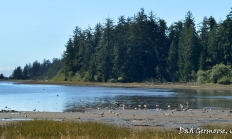
Article
The areas around Bandon, on the Coquille River, have productive softshell beds. The areas near Bandon Marsh National Wildlife Refuge tend to be the most popular. Populations of other bay clams may be found close to the jettys but are mostly subtidal.

Species and Subspecies

